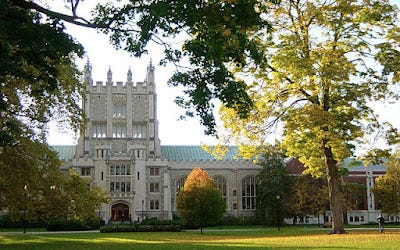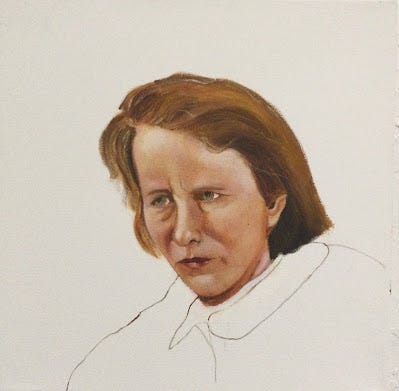#HudsonValley: Edna St. Vincent Millay’s Years at Vassar College
The Pulitzer Prize-winning poet graduated from this former women’s college in Poughkeepsie.
Edna St. Vincent Millay was a poet from the early twentieth century. Her poem “Ballad of the Harp-Weaver” won the Pulitzer Prize in 1923, the first time the award went to a woman poet.
She achieved notoriety early in life, which led to an education at a distinguished school: Vassar College.
Vassar College and Poughkeepsie
Founded in 1861, Vassar, for almost a century, was a top women’s college (chartered by a man, brewer Matthew Vassar). It has admitted men since 1969.
Associated with the Ivy League, it’s one of a group of northeastern women’s colleges—including Barnard, Bryn Maur, Mount Holyoke, Radcliffe, Smith, and Wellesey—collectively known as the Seven Sisters. Radcliffe is currently part of Harvard.
Among Vassar’s alumni include four more Pulitzer-winning writers: poet Elizabeth Bishop, novelist Jane Smiley, historian Ada Ferrer and journalist Alexandra Berzon.
The college is located in Poughkeepsie, a town settled in about 1780. It has a pedestrian bridge that spans the Hudson River. The Metro-North railroad terminates there. The mansion of telegraph inventor Samuel Morse, Locust Grove, resides on U.S. 9. The town also includes the Bardavon 1869 Opera House and the Mid-Hudson Children’s Museum.
The Frances Lehman Loeb Art Center is part of Vassar College. Vassar’s Observatory and its Main Building are both National Historic Landmarks.
Edna St. Vincent Millay at Vassar
Millay entered Vassar due to the generosity of a patron, one Caroline B. Dow. Millay’s poetry had been published when she was fifteen. When Dow heard Millay recite her work, she was impressed enough to pay for her college tuition. After a semester at Barnard, Millay enrolled in Vassar in 1913 at the age of twenty-one.
Vassar expected their students to behave like proper ladies. Millay was more of a firebrand, accustomed to smoking, drinking, playing gin rummy and flirting with men. School president Henry Noble MacCracken often disciplined her, but he also saw the potential in her.
Millay wrote for The Vassar Miscellany, the school paper (now known as The Miscellany News). The paper originally focused on reporting, essays and poems before it shifted to straight journalism, around the time Millay attended Vassar.
Millay composed song lyrics, such as the “Baccalaureate Hymn,” her graduating class song. She also wrote and acted in student plays, such as The Wall of Dominoes, which the Miscellany published.
For all of her accomplishments, Millay thought of Vassar as a “hell-hole.” A bisexual woman, she engaged in romances with other women while in college. One, stage actress Edith Wynne Matthison, went on to do a few silent movies.
At one point, Millay was suspended from school, which put her graduation in jeopardy. A petition signed by a hundred twenty members of the faculty, however, reprieved her. She did not get to sing her hymn with the rest of her class, though.
Life after Vassar
Millay graduated in 1917 and moved to New York’s Greenwich Village. Living there for her meant mixing with a wider variety of artists and writers, plus having more affairs, with men and women.
Her first book, featuring her initial hit poem, “Renascence,” was published. She wrote for Vanity Fair and other magazines. She published a second book and two more plays. In addition, she co-founded the Cherry Lane Theatre.
After Harp-Weaver came out, she married and moved to the upstate New York town of Austerlitz, until her death in 1950. Millay Arts, located on Millay’s former residence of Steepletop, is known today as a prominent arts community.
Portrait of Millay by Vija Doks. Check out her website; she’s good.
@byrichwatson
———————
Have you ever been to Poughkeepsie or seen Vassar College?





